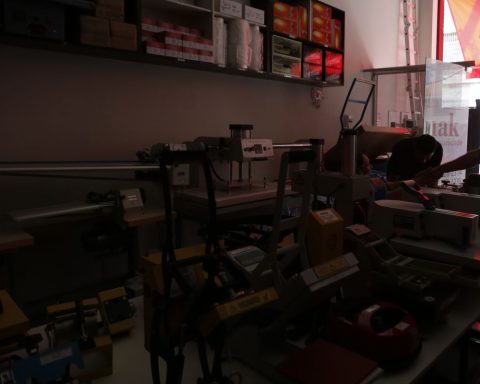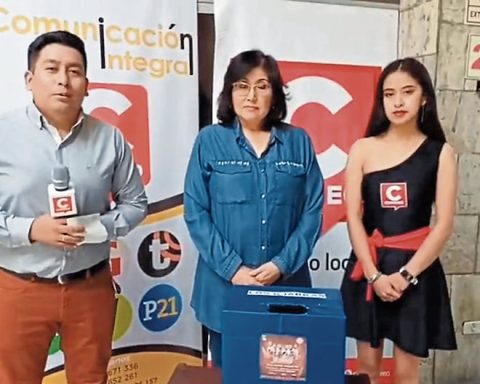The average interest rate on free and earmarked credit had a slight drop in August, but maintains the upward trend in 12 months, according to the Monetary and Credit Statistics released today (28) by the Central Bank (BC). The rate reached 28.7% per year in August, a reduction of 0.7 percentage points in the month and an increase of 7.6 percentage points in 12 months.
The rise in average bank interest rates comes at a time when the economy’s basic interest rate, the Selic, is at its highest level since January 2017, at 13.75% per year.
At the last meeting of the Monetary Policy Committee (Copom), the Selic rate was maintained at this level, after 12 consecutive increases, in a cycle of monetary tightening that began amid rising food, energy and fuel prices. The Selic is the main instrument used by the BC to achieve the inflation target.
In minutes released yesterday (27), the Copom evaluated that “the transfer of the Selic to the final rates of different types of credit has occurred as expected, even though the concessions of credit to legal entities are still more robust than expected”. The increase in the basic rate helps to control inflation because it affects prices, since higher interest rates make credit more expensive and stimulate savings, containing heated demand.
In free credit for families, the average interest rate reached 53.9% per year, with an increase of 0.5 percentage points in relation to July and 13.4 percentage points in 12 months. In contracts with companies, the free rate dropped 0.6 percentage points in the month and grew 6.6 percentage points in 12 months, reaching 22.8% per year.
For individuals, the highlight was the credit card, with an increase of 2.1 percentage points in the month and 25.5 percentage points in 12 months, reaching 87.3% per year. In revolving credit, which is the one taken by the consumer when he pays less than the full amount of the card bill and lasts 30 days, there was an increase of 3.5 percentage points in the month and 62.9 percentage points in 12 months, to 398.4 % per year. After 30 days, financial institutions pay the debt in installments. In this case of the installment card, interest rose 4.2 percentage points in the month and 22.3 percentage points in 12 months, to 185.9% per year.
Overdraft rates also influenced the increase in interest rates for families, with an increase of 1.2 percentage points in the month and 3.5 percentage points in 12 months (128.6% per year). On the other hand, interest on non-consigned personal credit fell by 1.1 percentage points in August and increased by 5.5 percentage points in 12 months (85.4% per year).
In free credit to companies, there was a drop of 1.5 percentage points in the month and an increase of 5.8 percentage points in 12 months in working capital, reaching 22% per year. Already in the overdraft, interest rose 3.6 percentage points in the month and fell 1.2 percentage point in 12 months, going to 325.4% per year. Import financing fell 2.3 percentage points in August and rose 1.7 percentage points in 12 months to 11.7% a year. Finally, the credit card had a decrease of 3.5 percentage points in interest for the month and an increase of 14.1 percentage points in 12 months, to 39.7% per year.
directed credit
These rates are for free credit, in which banks have the autonomy to lend money raised in the market and set the interest rates charged to customers. Directed credit, which has rules defined by the government, is basically intended for the housing, rural, infrastructure and microcredit sectors.
In the case of earmarked credit, the average rate for individuals was 10.6% per year in August, stable in the month and up 3.5 percentage points in 12 months. For companies, the rate dropped 6.3 percentage points in the month and 1 percentage point in 12 months, to 9.1% per year.
Increase in hiring
Even with the rise in interest rates, in August, the stock of all loans granted by the banks of the National Financial System (SFN) was R$ 5.067 trillion, an increase of 1.6% in relation to July. The portfolio’s 12-month growth reached 16.8% last month. The credit balance corresponded to 54.3% of the Gross Domestic Product (GDP), which is the sum of all the goods and services that the country produces.
The balance of SFN credit operations with micro, small and medium-sized companies grew 2.2% and 14.4%, in the month and in 12 months, respectively, compared to changes of -0.4% and 8.2% with the segment of large companies, in those same periods. As a result, according to the BC, the share of the micro, small and medium-sized portfolio maintained its gradual growth trajectory over the last two years.
Expanded credit to the non-financial sector, which is credit available to companies, families and governments regardless of the source (banking, bond market or external debt) reached R$ 14.259 trillion, growing 0.6% in the month and 10.4% in 12 months.
This increase occurred mainly in SFN loans in the domestic market, an expansion of 1.6%. In the inter-annual comparison, expanded credit grew 10.4%, with relevance to the growth in the debt securities portfolio (10.5%) and in the SFN loan portfolio (16.8%).
Household indebtedness
According to the BC, delinquency (considering delays of more than 90 days) has remained stable for a long time, with small fluctuations, and registered 2.8% in August. In free credit operations for individuals, it is at 5.6% and for companies at 1.8%.
Household indebtedness, the ratio between the balance of debts and income accumulated in 12 months, reached a record of 53.1% in July, in the historical series started in January 2005, reflecting the increase in loan concessions. There was a rise of 0.3% in the month and 5.1% in 12 months. Excluding real estate financing, which takes a considerable amount of income, it stood at 33.6% in July.
Income commitment, the ratio between the average amount to pay debts and the average income calculated in the period, was 28.6% in that month, growth of 0.5% in the month and 3.8% in 12 months, also the series record. For these last data, there is a greater lag in the month of disclosure, as the Central Bank depends on data presented by the Brazilian Institute of Geography and Statistics (IBGE) on family income.

















